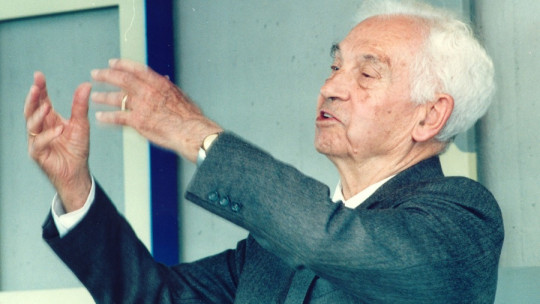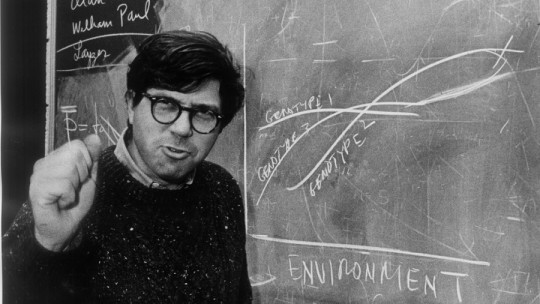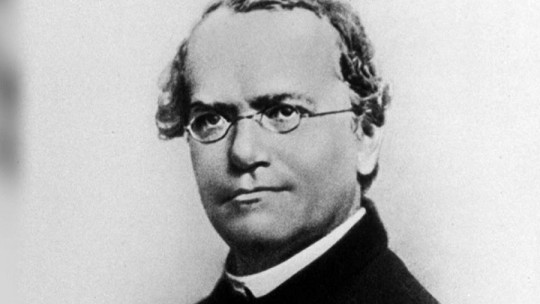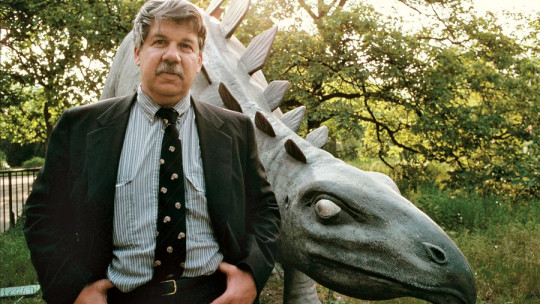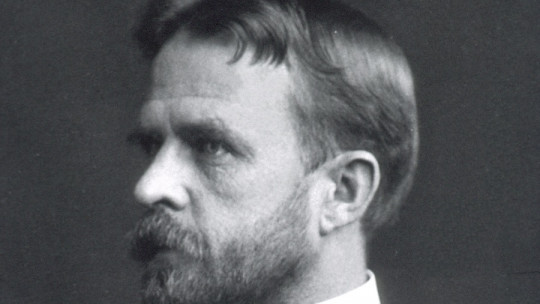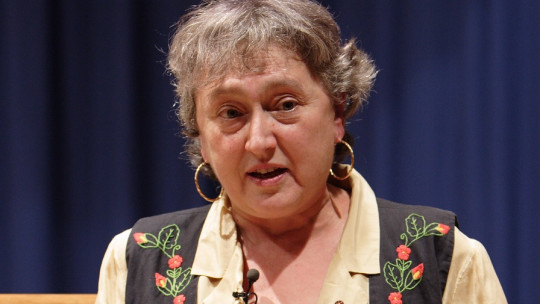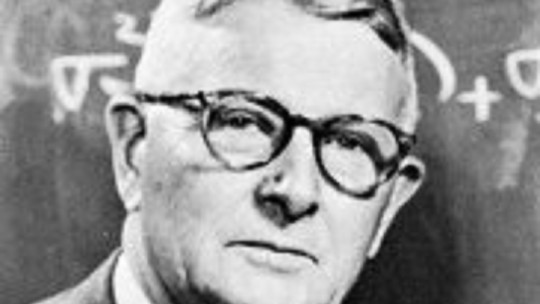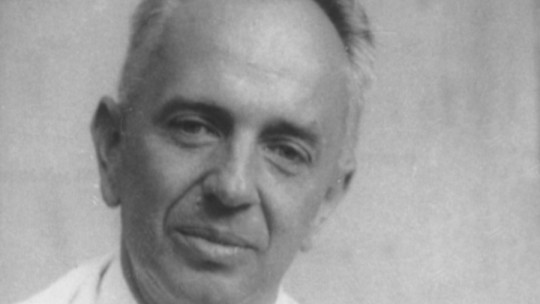
Although the 20th century began with the modern theory of Darwinian evolution very widespread, there were many doubts about how natural selection occurred. The inheritance of traits was something whose study was very recent and Mendel’s work was still very unknown in the scientific community.
Genetics was emerging and one of its most famous scholars was Theodosius Dobzhansky, who used it to explain how the evolutionary process occurred.
This geneticist of Ukrainian origin is considered one of the most important figures in the study of evolutionary biology and today we are going to discover what happened to his life through a biography of Theodosius Dobzhansky in summary format.
Brief biography of Theodosius Dobzhansky
Theodosius Dobzhansky was a Ukrainian-born geneticist and evolutionary biologist whose work is considered fundamental to the field of evolutionary biology. With his studies he managed to shed some light on the question of how natural selection occurred behind the evolution of species. His 1937 work “Genetics and the Origin of Species” became one of the most notable works of genetics research of all time. He was awarded the United States National Medal of Science in 1964, and the Franklin Medal in 1973, among multiple other recognitions.
Early years
Theodosius Grygorovych Dobzhansky was born on January 25, 1900 in Nemyriv, a Ukrainian town then part of the Russian Empire. He was the only son of Grigory Dobzhansky, a mathematics professor, and his mother was Sophia Voinarsky. His parents gave him this name because they wanted to have a son but they were a little older and were afraid that they would not be able to have one, so they prayed to Saint Theodosius of Chernigov to be granted a son.
In 1910 the Dobzhansky family moved to kyiv, the city where Theodosius attended his institute There he spent his youth collecting butterflies as entertainment, a hobby that made him want to be a biologist when he grew up. In 1915 he met Victor Luchnik, an entomologist who convinced him to specialize in research on beetles.
Youth and university stage
Between the years 1917 and 1921 Theodosius Dobzhansky He attended the University of kyiv, finishing his studies in 1924 specializing in entomology, that is, the study of insects. He then moved to St. Petersburg, Russia, where he would study under the direction of Yuri Filipchenko in a laboratory specialized in the study of Drosophila melanogaster, known both as the vinegar fly and the common fruit fly.
On August 8, 1924, Dobzhansky married geneticist Natalia “Natasha” Sivertzeva, who worked with the zoologist Ivan Ivanovich Shmalgauzen in kyiv. The couple had a daughter, Sophie, who would marry American archaeologist and anthropologist Michael D. Coe. Before immigrating to the United States, Theodosius Dobzhansky published 35 scientific works on entomology and genetics.
Transfer to the United States
Theodosius Dobzhansky immigrated to the United States in 1927 on a scholarship from the Rockefeller Foundation Board of International Education. He arrived in New York on December 27 of that year and, almost immediately, joined the Drosophila Research Group at Columbia University, working with geneticists Thomas Hunt Morgan and Alfred Sturtevant. This research group revealed very important information about the cytogenetics of flies, that is, the hereditary material in these insects.
Added to this, Dobzhansky and his team helped establish the Drosophila subobscura as a very suitable animal model for evolutionary biology studies Theodosius Dobzhansky’s original belief, after studying with Yuri Filipchenko, was that there were serious doubts about how to use data obtained from phenomena occurring in local populations (microevolution) and phenomena occurring on a global scale (macroevolution).
Filipchenko believed that there were only two types of inheritance: Mendelian inheritance, which would explain variation within species, and non-Mendelian inheritance, which would be conceived more in a macroevolutionary sense. Dobzhansky would later consider that Filipchenko had opted for the wrong option.
Theodosius Dobzhansky followed Morgan to the California Institute of Technology (CALTECH) from 1930 to 1940. In 1937 published one of the most important works for the modern evolutionary synthesis, the synthesis of evolutionary biology with genetics, entitled “Genetics and the Origin of Species” (Genetics and the Origin of Species). In this work, among other things, he defined evolution as “a change in the frequency of an allele within the gene pool.”
Obtaining North American citizenship
In 1937 he became a full citizen of the United States, which allowed him to have even more relevance in the field of North American genetic research.
The work of Theodosius Dobzhansky was fundamental in extending the idea that natural selection occurs through mutations in genes Perhaps out of envy or competitiveness, it was also this time that she quarreled with Alfred Sturtevant, one of his colleagues in the Drosophila group.
In 1941 Dobzhansky received the Daniel Giraud Elliot Medal from the National Academy of Sciences of the United States, the same year in which he became president of the Genetic Society of America in 1941. In 1943 the University of Sao Paulo granted him an honorary doctorate. He returned to Columbia University from 1940 to 1962. He is also known for being one of the signatories in the debate raised by UNESCO in 1950 on The Racial Question.
In 1950 he was awarded the title of president of the American Society of Naturalists, president of the Society for the Study of Evolution in 1951, president of the American Society of Zoologists in 1963, a member of the Board of Directors of the American Society of Eugenics in 1964, and president of the American Teilhard de Chardin Association in 1969.
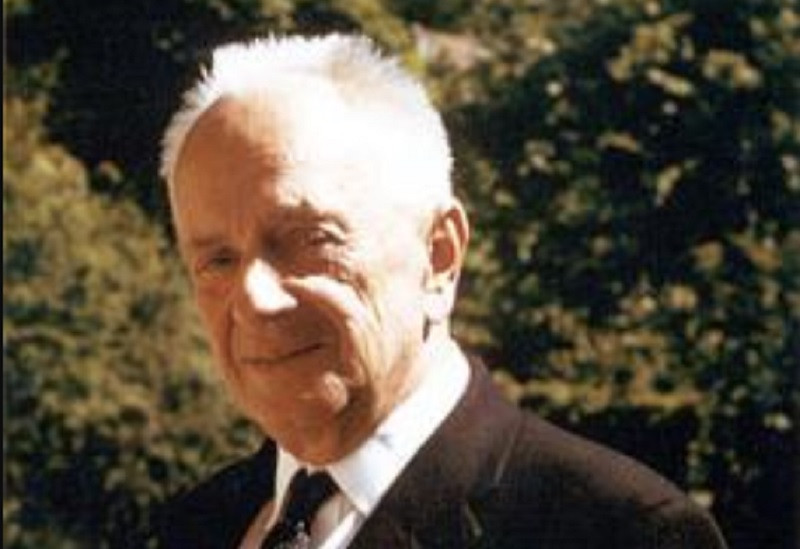
Last years
Theodosius Dobzhansky’s wife, Natasha, died of a coronary thrombosis on February 22, 1969, a misfortune that joined the one she had already been suffering from the previous year when was diagnosed with lymphocytic leukemia The prognosis was that she would live a few more months, at most a few years at best.
In 1971 he retired and moved to the University of California, where his student Francisco J. Ayala became an assistant professor and where Dobzhansky continued to work as professor emeritus. In 1972 he was chosen as the first president of the BGA (Behavior Genetics Association) and he was socially recognized for his work on behavioral genetics and founder of that association, also creating the Dobzhansky Prize awarded to those who have dedicated themselves to the study of this discipline.
Despite being retired, It was in the last years of his life that he published one of his most famous essays, “Nothing in Biology Makes Sense Except in the Light of Evolution.” (“Nothing makes sense in biology if it is not in the light of evolution”) and, at that time, he influenced the paleontologist and priest Pierre Teilhard de Chardin.
In 1975 his leukemia worsened, and on November 11 he traveled to San Jacinto, California, to receive treatment and care. Working until the last moment as a professor of genetics, Theodosius Grygorovych Dobzhansky died of heart failure on December 18, 1975, in Davis, California, at age 75. He was cremated and his ashes were scattered throughout the Californian wilderness.
Genetics and the Origin of Species
Theodosius Dobzhansky made three editions of his most famous book “Genetics and the Origin of Species”. Although this book was written for an audience specialized in biology, its writing was careful to make it as understandable as possible. It is considered one of the most important books written throughout the 20th century on evolutionary biology. In each revision of “Genetics and the Origin of Species,” Dobzhansky added new content to update it
The first edition of the book, published in 1937, sought to highlight the most recent findings about genetics and how they could be applied to the concept of evolution. The book begins by referring to the problem of evolution and how the most modern discoveries in genetics could help find a solution. The main topics discussed are: the chromosomal basis of Mendelian inheritance, how changes in chromosomes affect more than gene mutations, and how mutations form specific and racial differences.
The second edition of “Genetics and the Origin of Species” came in 1941, and in it he added even more information, also explaining what scientific discoveries in the field of genetics he made in the four years between the first and the second. About half of the new research he conducted in that period was added to the last two chapters of the book: Patterns of Evolution, and Species as Natural Units.
The third revision of the book was published in 1951 and in it Dobzhansky He revised all ten chapters of the work due to the many discoveries he had made throughout the 1940s In it he added a new chapter titled “Adaptive Polymorphism,” and the work to be generated includes precise and quantitative evidence about natural selection replicated in the laboratory and seen in nature.
The Racial Question
In evolutionary biology, the debate on race led by Theodosius Dobzhansky and Ashley Montagu is well known The use and validity of the term “race” was debated for a long time, without reaching an agreement on whether it was pertinent to use it in science or not. Montagu believed that this word was associated with very toxic events, which is why it was best to eliminate it completely from science, while Dobzhansky did not agree.
Dobzhansky, on the other hand, believed that science should not give in to the abuses that could have been made of a word socially, considering that the term “race” could continue to be used if it was properly defined and not misinterpreted in a political or social sense. Montagu and Dobzhansky never reached an agreement and, in fact, Dobzhansky made an acid comment in 1961 commenting on Montagu’s autobiography, which translates as follows:
“The chapter on “Ethnic Group and Race” is, of course, deplorable, but let’s say that it is good that in a democratic country any opinion, no matter how deplorable, can be published” (Farber 2015 p. 3).
The concept of “race” has been important in many life sciences. The modern synthesis revolutionized the concept of race, going from being used as a biological and social label to classify human beings into different groups, attributing physical traits and intellectual abilities, to being used today as a mere description of populations that differ in their genetic frequencies. The main reason why current science is reluctant to use the term “race” is because of the great abuses that have been committed throughout its history.
That Dobzhansky was in favor of the term “race” not disappearing from the biological sciences did not mean that he was a defender of racism. In fact, His research led him to conclude that racial mixing did not imply any medical problem, something observed with his multiple experiments with vinegar flies, crossing various breeds of them. He did observe that if the flies belonged to very different races there was a possibility that their offspring would not be fertile, but he did not extrapolate this to the human species.
Many anthropologists, before the UNESCO debate on The Racial Question began, were trying to look for the traits of each “race” to clearly establish what defined each one. Dobzhansky considered that this had no scientific value since he had observed that the variation between individuals of the same population was greater than that between groups. In other words: it would be easier to find a prototype of a generic human than one of each race, as it would not be so clear what made a person belong to one race or another.
His opinions on genetics, evolution and racial mixing generated controversy. He stated that race was not about groups but rather about individuals and that therefore it is not races that mix but individuals. Secondly, if the races do not mix then in the long run they will become different species, and therefore it is necessary that they mix to avoid this. In fact, the current races would be the product of past racial mixing, and In Dobzhansky’s vision there would be no race that was pure
Dobzhansky tried to put an end to the alleged science that claimed that physical traits determined race and, based on this, also position in society. He considered that it was not possible to identify a true lineage for the human being, that genetic background did not determine how big a person was.

